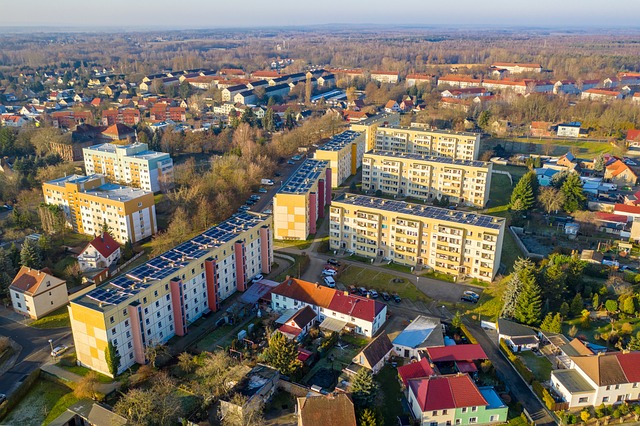Incentives like cash back, discounts, and tax credits for home improvements and renewable energy systems significantly impact the real estate market by making initial investments more attractive, boosting property values with energy-efficient features, and achieving higher selling prices for developers. Homeowners can mitigate installation costs through government incentives, rebates, tailored programs, grants, specialized contractors, and staying updated on eligibility criteria to reduce upfront expenses and enjoy long-term utility savings, contributing to a sustainable real estate sector.
In today’s competitive real estate market, understanding incentives and rebates can significantly offset installation costs. This article explores strategies for both homeowners and developers to maximize savings through various programs. We delve into how incentives can enhance projects, reduce expenses, and contribute to a more sustainable future in the real estate sector. By navigating the complexities of these initiatives, you’ll unlock valuable insights to make informed decisions.
Understanding Incentives and Rebates: A Real Estate Perspective

Incentives and rebates play a significant role in the real estate market, especially when it comes to offsetting installation costs for various home improvements or renewable energy systems. For buyers and investors, understanding these financial incentives can be a game-changer. These offers often come in the form of cash back, discounts, or tax credits, making initial investments more feasible and attractive.
From a real estate perspective, properties equipped with energy-efficient appliances, solar panels, or smart home systems can command higher prices and shorter selling times. This is because many buyers are now seeking out homes that offer long-term savings on utility bills. As such, developers and landlords who incorporate these incentives into their strategies can enhance the overall appeal and value of their real estate offerings, staying ahead in a competitive market.
How Installation Costs Can Be Offset: Strategies for Homeowners and Developers

Many homeowners and real estate developers often face significant installation costs for various projects, such as renewable energy systems or smart home upgrades. However, these expenses don’t have to be prohibitive. There are several strategies to offset installation costs, making these endeavors more accessible and affordable.
One effective approach is to leverage incentives and rebates offered by local, state, or federal governments. These financial encouragements can significantly reduce the overall cost of installation. Homeowners can explore programs tailored for energy-efficient upgrades or renewable energy adoption, while developers should stay updated on grants and tax credits available for green building initiatives. Additionally, working with contractors who specialize in these projects can provide access to industry insights and potential bulk purchasing discounts, further alleviating installation costs.
Maximizing Savings: Navigating the Complexities of Incentive Programs in Real Estate

In today’s competitive real estate market, maximizing savings is a top priority for both buyers and sellers. One effective strategy to achieve this goal is by navigating the complexities of incentive programs offered by various government bodies and energy providers. These incentives, often in the form of rebates or tax credits, are designed to offset the initial installation costs of energy-efficient systems, such as solar panels or smart thermostats.
Understanding these programs requires a keen eye for detail, as eligibility criteria, application processes, and reimbursement timelines can vary widely. As a professional in the real estate sector, it’s crucial to stay informed about local, state, and federal initiatives. By carefully reviewing these incentives and their terms, homeowners can significantly reduce upfront expenses while enjoying long-term savings on utility bills. This strategic approach not only benefits individual properties but also contributes to a more sustainable and cost-effective real estate landscape overall.






